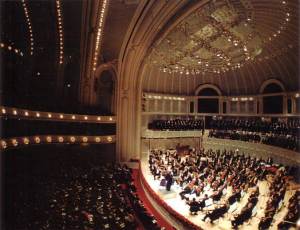Simply, a list.
Aukey 24 watt Rapid car charger.
Featuring two, 2.4 amp charging ports, this thing can keep your phone charged even if you are using power-hungry navigation apps all day long.
Micro USB Charge-Only Cable
Need a quick charge? You may not be able to use this cable to sync your phone or tablet to your computer, but boy does it charge fast!! The difference is especially noticeable in the car, or when charging from a USB port on a computer. I keep one in the car, and one plugged into my computer at work.
Roller Coasters
With
Busch Gardens and
Universal Orlando nearby, there are plenty of exciting options. Favorite nearby coaster:
Sheikra at Busch Gardens and its 200-foot, 90-degree drop. Hope to get to roller coaster mecca
Cedar Point (Ohio) before too long.
Solar Shield Sunglasses
Sun protection that can be worn over prescription glasses without scratching them, or making you look like a geriatric glaucoma patient.
Republic Wireless
Cell Phone Service
$10/month. 'nuf said.
Moto X Cell Phone
Lots of cool features. Looks great, too.
The Google Universe
Seamlessly work across devices--phone, home and work computers... Fantastic apps (calendar, maps, Google Now...), desktop applications (Audacity), and, of course, the Cloud (Google Drive).
Popcorn
My favorite snack/comfort food. Extra tasty eaten with thin-sliced cheddar cheese.
MUSIC GEAR
Selmer Paris Super Action 80 Series II Saxophones
Selmer Paris S80 Mouthpieces
Vandoren Traditional Reeds
N-Track Tuner App
Metronome
 Toyota Prius
Toyota Prius
50 miles per gallon, thank you.
PIZZA in Gainesville
Leonardo's of Millhopper Deep Dish Pizza
Rivals the best Chicago has to offer. I know--I lived in Chicago for 13 years. If you haven't been to this place,
go there now.
Piesano's Pizza
A most excellent thin-crust, wood-fired pizza. Plus free garlic rolls.
Blaze Pizza
Tasty, fast, pick-all-the-toppings-you-want-for-one-price, even-thinner-crust pizza.
Lenovo $300 laptop computers
My go-to computer for work, communications, and video streaming. Saw one with an Intel i3 processor for $270 recently. More power than most people will ever need. And if it gets lost or stolen....hey, it's only $300.
CD: "Music for Saxophone and Cello" by the Helton-Thomas Duo
:)
Steak
Rare/Medium rare.
Cell Phone Apps:
HERE
Offline navigation. Turn-by-turn navigation without using any cell data. Works all over the world. I used it in France this summer. THE app to use around town or out of the country. Priceless! (also, free!)
WAZE
The navigation app I use on long trips. Circumnavigates heavy traffic, road closures. Warns of road hazards, traffic backups, speed traps.
MOTO ASSIST
Reads incoming texts when driving. Also allows you to reply to texts hands free. Can silence the phone at night while you sleep.
GOOGLE CALENDAR
Seamless integration with the desktop version. Can automatically silence the phone during meetings (or concerts). Tap the location of your event and it will open a navigation app.
MOTOROLA CONNECT
Allows you to send texts from your desktop computer. You can also ring your phone, in case you've misplaced it.
GOOGLE NOW
Talk to the phone and it will look stuff up for you, or make a call, or send a text, or find a restaurant....
N-TRACK TUNER
The only tuning app I've found that can hear very high notes.
MR NUMBER
Blocks spam phone calls and texts.
 What I play (alto)
What I play (alto)
















